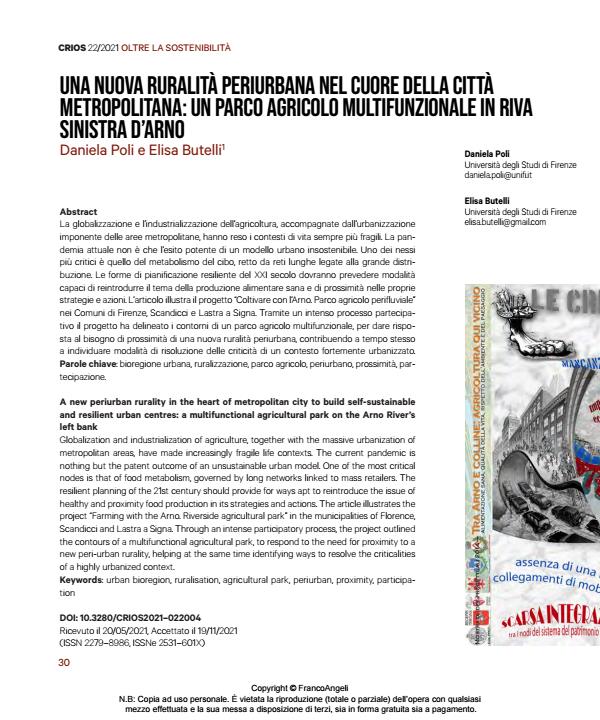A new periurban rurality in the heart of metropolitan city to build self-sustainable and resilient urban centres: a multifunctional agricultural park on the Arno River’s left bank
Journal title CRIOS
Author/s Daniela Poli, Elisa Butelli
Publishing Year 2022 Issue 2021/22
Language Italian Pages 14 P. 30-43 File size 1033 KB
DOI 10.3280/CRIOS2021-022004
DOI is like a bar code for intellectual property: to have more infomation
click here
Below, you can see the article first page
If you want to buy this article in PDF format, you can do it, following the instructions to buy download credits

FrancoAngeli is member of Publishers International Linking Association, Inc (PILA), a not-for-profit association which run the CrossRef service enabling links to and from online scholarly content.
Globalization and industrialization of agriculture, together with the massive urbanization of metropolitan areas, have made increasingly fragile life contexts. The current pandemic is nothing but the patent outcome of an unsustainable urban model. One of the most critical nodes is that of food metabolism, governed by long networks linked to mass retailers. The resilient planning of the 21st century should provide for ways apt to reintroduce the issue of healthy and proximity food production in its strategies and actions. The article illustrates the project "Farming with the Arno. Riverside agricultural park" in the municipalities of Florence, Scandicci and Lastra a Signa. Through an intense participatory process, the project outlined the contours of a multifunctional agricultural park, to respond to the need for proximity to a new peri-urban rurality, helping at the same time identifying ways to resolve the criticalities of a highly urbanized context.
Keywords: urban bioregion, ruralisation, agricultural park, periurban, proximity, participation
Daniela Poli, Elisa Butelli, Una nuova ruralità periurbana nel cuore della città metropolitana: un parco agricolo multifunzionale in Riva sinistra d’Arno in "CRIOS" 22/2021, pp 30-43, DOI: 10.3280/CRIOS2021-022004